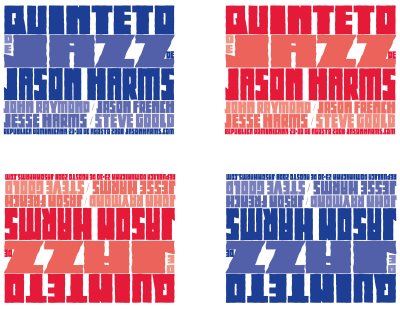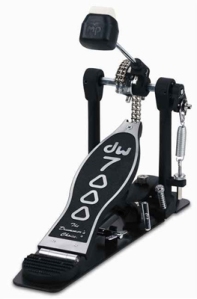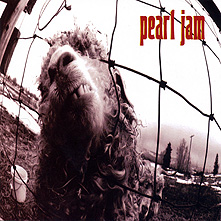You are currently browsing the monthly archive for August 2008.
Hey hey. This trip is going pretty well, but I’ve been feeling ill for a lot of the time here. Oh well.
Last night we played this great little jazz club in the Colonial City of Santo Domingo. It was a very cool experience. I’ll be back in town next week so look for regular posts to return after Labor Day. Later.

I’m heading to the Dominican Republic today (fri. morning) for a week’s worth of gigs with my friend Jason Harms. I probably won’t be posting much while I’m gone, but you can check here for updates while we’re down there.
Here’s a random “head’s up.” The DW 7000 series kick pedals totally rule, but they have a significant design flaw that everyone should be aware of.
First of all, let me say that I own one of these pedals and I have used the model for years. I had a 7000 double pedal back in highschool, and I bought a single in college, and a couple years ago bought another single after a short stint experimenting with an Iron Cobra. Ultimately, I like the action and feel of the 7000 the most out of any other kick pedal (aside from an old Yamaha leather strap drive that I use for Jazz). The popular 5000 and 9000 series pedals cost way more, but those models offer very little improvement on the 7000, and are instead packed with frivolous and unnecessary add-ons. In fact, as the 5000 and 9000 models have undergone upgrades, the 7000 has typically replaced the old models (meaning, the 7000 that you buy today is the exact same pedal as the 5000 from a few years ago). So anyway, for those of you who wonder what kick pedal I use, I recommend the DW 7000, especially when you consider the price.
That being said, there has always been a huge design flaw in the model. It’s the placement of the bolt connecting the chain drive to the foot plate. The top of the bolt is recessed into the foot plate, and connects through to a bracket underneath that attaches with a nut on the other side. This bolt, for whatever reason, always breaks. I noticed this when I began to really kick hard (in college), and I found myself snapping the bolt about once every 3 months. I had to carry around extra bolts that I bought from the hardware store so I could fix my pedal whenever it broke (which sometimes happened during performances). It was so annoying that I switched to an Iron Cobra. When I had a litttle trouble with the Iron Cobra (several years later), I opted to sell it instead of fixing it and decided to buy another 7000, because I assumed DW would have fixed the problem. To my dismay, I opened the box and found the same design, and a packet of extra bolts! Obviously, DW was aware of the problem but chose to provide replacement parts instead of improving the design. Sure enough, the bolt broke in the middle of a gig two weeks later.
So, I fixed the design myself. I took the pedal to a sculptor friend of mine who drilled a bigger hole in the foot plate and the chain drive attachment. Then, he just put a thick, tempered bolt in place of the small stock bolt. It hasn’t broken since.
SUMMARY: For $100, the DW 7000 single is the best pedal out there, but if you get one make sure to do the tempered-bolt mod.
I Found this cool Bill Frisell video just now. It features the great Matt Chamberlain on drums, so it’s probably from the Floratone tour from a few years ago. For my money, it doesn’t get any better than Frisell and Chamberlain together. Love it.
I’m going a different direction for Album of the Week this time around. Instead of a record I’ve been listening to lately, I want to turn everybody on to an older album that had a huge role in shaping me when I was younger: VS, by Pearl Jam. I got this album when I was 13, and even now (15 years later) I still love it.
VS was Pearl Jam’s second record. Ten, their debut recording, was a huge international success, selling over 12 million copies. In line with Eddie Vedder’s typical “anti-establishment” style, the band went a completely different direction for their sophomore release, recording an album with much more raw and aggressive songs and a less “produced” sound. Compared to Ten, the VS album had no real radio singles, and the band produced no music videos for any of the tracks. It is all the more impressive, then, that VS sold over 7 million copies and is commonly cited as the “fan-favorite” in Pearl Jam’s discography.
The best part of this record is the energy. I actually can’t think of a rock record that has more “pump-up” from track to track, and yet keeps the songs somewhat diverse and artistically interesting. The drum performances on this album, recorded by Dave Abbruzzese, were the single most prominent influence on the early formation of my view on what a “rock” drummer should sound like. The most notable examples would be “Go” (track 1), “Daughter” (track 3), “Rats” (track 9), and “Leash” (track 11). My all-time favorite Abbruzzese track is a B-side from the VS sessions, called “Alone” (which can be heard on the Lost Dogs B-side compilation).
I should say at this point that, after studying the drumset for 15 years since first hearing VS, I don’t think of Abbruzzese’s performances on these tracks as perfect. In fact, I find new “flaws” every time I listen to it. That’s the way it works – you grow as a musician and, over time, things that once seemed amazing become less and less impressive. However, I will still always cite this recording as a huge part of my early development as a drummer.
For those of you who haven’t seen Episode 4 of the video lesson series, “Go” (the opening track of VS) gets a shout-out as a great example of the “4 on the snare” groove.
Sidenote: I have a love/hate relationship with Pearl Jam’s drummers. “Ten” was ghosted by studio drummer Matt Chamberlain, and Abbruzzese played on both “VS” and the third Pearl Jam record, “Vitalogy.” I am a big fan of both Chamberlain and Abbruzzese, and these guys really helped to shape Pearl Jam’s sound. But then, after the Vitalogy record, Vedder fired Abbrusseze and got ex-Chili Peppers drummer Jack Irons. Then, after Soundgarden disbanded, Vedder picked up Matt Cameron, who remains the Pearl Jam drummer today. In a rare moment of printed criticism, I will boldy state that both Irons and Cameron are awful… in fact, I can’t decide who sucks more. Probably Cameron actually, who has been in Pearl Jam for ten years now and has only gotten WORSE.
This weekend I’m playing a few times out at Higher Ground Music Festival in Winsted, MN. I’ll be performing with Elizabeth Hunnicutt tomorrow and the Jeremy Sanoski Band on Saturday. The lineup for the festival looks pretty cool this year.
Musical counting (i.e. keeping track of the numerical names of the beats as you play) is a big deal to me. I’m planning on writing a series of posts on counting sometime soon, but for now I’d like to address a couple “myths” about counting…
Myth #1: “Counting will wreck my feel.” I am constantly surprised at how many musicians choose to ignore counting in an effort to “feel” the music instead, as if the two aren’t compatible. There is nothing about counting that will take the feel out of your playing. Everybody should read the previous sentence again because it’s very important, and IT’S TRUE. “Feel” is an aspect of music that comes from the incredible physical power that music has in communicating orientation. The entire crowd at a U2 concert will be able to clap in unison with a song, because everyone in the stadium can FEEL where beats “2” and “4” are (regardless of whether they know that those beats are named “2” and “4”). Counting along with the music will never take the power of music’s feel away.
Myth #2: “It’s too hard for me to play and count at the same time.” This is like saying that it’s too hard for you to both navigate a car and operate a stick shift. Sure, counting along with your grooves is a little tricky to get used to if it’s new to you, and everyone experiences that at first. But this initial difficulty is not a fair justification for never learning to count, especially when you consider the benefits you’ll notice once you take the time to tackle counting.
Watch for more in-depth posts on counting soon…
Playing music is a mental game, not a physical one. I say this all the time in my private lessons, and I’ve mentioned it on this blog before also. Certain aspects of playing an instrument revolve around physical capabilities, but even then the mental component plays a prominent role. Therefore, focus is your biggest asset.
Earlier today I was teaching a lesson and the student was struggling with playing a particular groove. The struggle, however, was with playing the groove more than a couple times in a row. He could play it fine for the first measure, then straight into the second measure with no problem, but he would inevitably fall apart somewhere in the third measure. We talked about it a little and I asked him why the third measure was different. The groove doesn’t change on the third time around, and in playing the groove correctly for the first two bars he was proving that he could do it. He thought about it and realized that he was losing focus after the first couple times. He was pulling the rug out from under himself by taking away the most important ingredient.
That is pretty much always going to be the answer for why anyone will struggle with anything on the drumset. Unless you’re talking about blazing cross-chops and stick spinning tricks, the primary (and often ONLY) obstacle between you and being able to play the groove/fill you want to play is focus.
SUMMARY: If you have not yet considered focus to be the main issue in playing drums, then you will probably find every element of your playing to be easier once you put your focusing at the top of your priority list.
 The pick for the third installment of Album of the Week is Haley Bonar’s new record, Big Star. Haley is a friend of mine from the music scene in Minneapolis, and the rest of the band members on this recording are also Minneapolis musicians: Dave King on drums (my former teacher), Bill Mike on guitars (from the Bill Mike Band), and Chris Morrissey on bass/vocals (also from the Bill Mike Band). BUT, Big Star isn’t the new Album of the Week just because the musicians are my friends. It is a truly incredible record.
The pick for the third installment of Album of the Week is Haley Bonar’s new record, Big Star. Haley is a friend of mine from the music scene in Minneapolis, and the rest of the band members on this recording are also Minneapolis musicians: Dave King on drums (my former teacher), Bill Mike on guitars (from the Bill Mike Band), and Chris Morrissey on bass/vocals (also from the Bill Mike Band). BUT, Big Star isn’t the new Album of the Week just because the musicians are my friends. It is a truly incredible record.
The music follows a standard folk formula, with the typical focus on song writing and melody, but includes sonic landscaping reminiscent of Death Cab meets Fiona Apple. The record was tracked at Pachyderm Studios and mixed by the world-renowned Tchad Blake, which keeps the quality from sounding sub-par or “indie” (even though the entire production was managed on just a small percentage of a major label budget). The “indie” spirit and creativity is still present, however. And then, sitting comfortably on top of all of this, is Haley’s voice, which is one of the most unique-yet-soothing female vocal that I have ever heard.
The readers of this blog that are familiar with Dave King and the rest of his discography will be blown away by the way King is able to retain his personality on the drum set while still serving the music of a folk record. His feel is of course incredible, but the real magic of King’s playing on Big Star is the approach and treatment that he gives to each tune. At no point does he infringe on the style of the music, and yet almost every track contains unique and forward-thinking ideas for folk drumming.
Everyone should at the very least go visit Haley’s Myspace page and listen to a couple of the tracks, and you can also find info there on her tour dates and other happenings.




Recent Comments